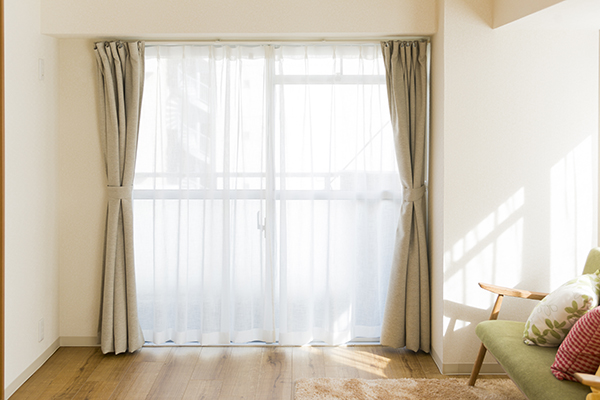You may not be able to replace your current windows with top-of-the-line, energy-efficient ones right now, but that doesn’t mean you can’t save on energy costs in the meantime. Sometimes overlooked, window treatments, such as blinds and curtains, can actually help to keep the sun out — resulting in a cooler home and a lower electricity bill. Here are a few of our favorite energy-efficient window treatments.
Plantation Shutters
One of the best ways to reduce heat gain from the summer sun in your home is to have plantation shutters professionally installed on each of your windows. Typically made of wood, but sometimes made of vinyl, the shutters are custom-fitted to each window and hung on hinges. As a bonus, these tasteful, long-lasting window treatments are often coveted by home buyers, so you can certainly consider it to be a wise investment, if you ever plan to move.
Blinds
According to the U.S. Department of Energy (DOE), when highly reflective interior blinds are lowered and closed on a sunny window, they can reduce heat gain by around 45 percent. If you want to let a little light in, instead, they can also be adjusted to reflect the sunlight on a light-colored ceiling, diffusing the light without much heat or glare.
Lined Drapes
How much heat gain is reduced by a simple medium-colored drape with a white plastic backing? A whopping 33 percent, claims the DOE. Add to that the fact that the drapes stay cooler than some other window treatments in the summer because their pleats and folds lose heat through convection, and you’ve got yourself a bonafide energy-efficient — and tasteful — window treatment.
Shades
Shades are some of the best window treatments because of their simplicity and effectiveness. There’s a secret to their success, though: being properly hung. You want to get each shade as close to the window glass as possible, with the sides of the shade as close to the wall as possible, to create a sealed air space.
For the most bang for your buck, consider installing dual shades — shades that have a white, highly reflective side as well as a dark, heat-absorbing side. That way, you can reverse the shade, depending on the season. In the summer, the reflective side should face the window, to keep the heat out. And in the winter, it should face the room, to keep the heat it.
Another shade option is the honeycomb style, which features a layered design that traps the air in its individual “honeycomb” cells. Air is a poor conductor of heat, so this type of shade creates an effective temperature-transfer barrier between the window and the interior room.
All rights reserved to the initial publisher for American Home Shield
Collected and published by Arms &McGregor International Realty® editorial team. Get in touched with us at [email protected]

